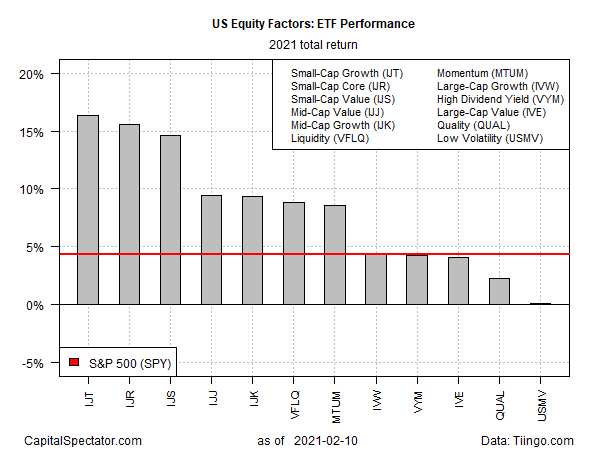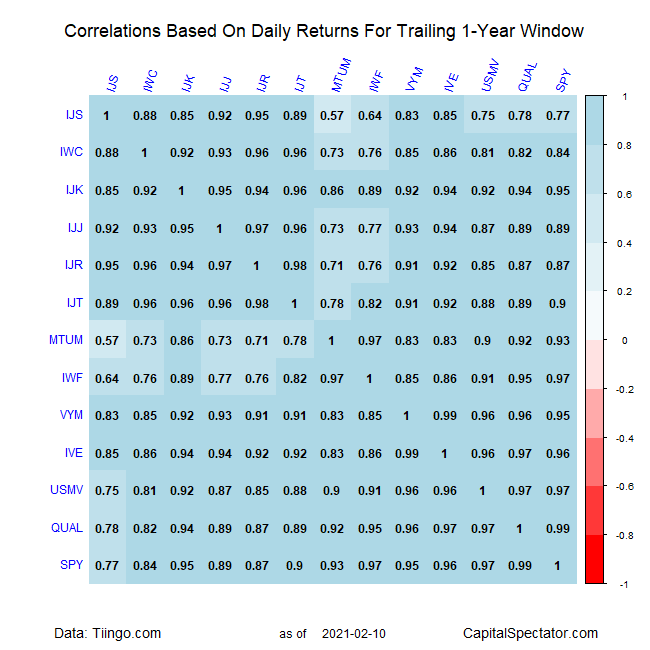Small-capitalization shares are having a good year. It’s only mid-February, but year-to-date results continue to show a strong performance edge in favor of smaller stocks in the U.S. equity space, based on a set of exchange traded funds through yesterday’s close (Feb. 10).
Within the small-cap bucket, growth is on top. The iShares S&P Small-Cap 600 Growth ETF (NASDAQ:IJT) is up an impressive 16.4% so far in 2021. Earlier this week, the fund closed at a record high before pulling back in yesterday’s session.

The core and value slices for small caps are in close pursuit, posting this year’s second- and third-best performances, respectively, in the equity factor realm.
Small caps are also posting impressive performance in relative terms versus the market overall. The roughly 14% to 16% year-to-date rally in various flavors of small caps represent gains that are far above the broad market’s 4.3% increase, based on SPDR® S&P 500 (NYSE:SPY).
The bullish breakout in small caps “is a positive signal, though it does lose some of its bullish impact due to the [Russell 2000 Small Cap] index already being so extended,” advises technical analyst Andrew Adams of Saut Strategy in research note published yesterday.
The weakest factor performer this year: low-volatility. The iShares MSCI USA Min Vol Factor ETF (NYSE:USMV) has struggled to keep pace with the general rise in equities this year, leaving USMV essentially unchanged year to date.

Motley Fool notes that defensive stocks, including the low-vol factor, have had a tough time in the wake of last spring’s coronavirus crash:
The stated objective of these ETFs was to invest in stocks whose price movements had historically been less volatile than the overall market. As iShares put it, those stocks have “potentially less risk,” and historically, those stocks had declined less than the overall market during downturns.
Yet when the coronavirus bear market happened in early 2020, it turned all the old rules on their head. As a result, low-volatility stocks failed to deliver on the expectation that they’d suffer less dramatic hits than their higher-volatility peers
Despite the relatively wide range of returns so far in 2021, finding diversification benefits by slicing and dicing equity risk into various factor buckets has been challenging lately. Using a rolling one-year window for all the factor ETFs listed above shows that the median return correlation (based on daily performances) remains elevated relative to history in recent years.

The good news is that specific factor pairings offer more encouraging results. Large-cap growth (IWF) and small-cap value (IJS), for example, offer relatively complimentary return profiles over the last year via a 0.64 correlation (i.e., well below a 1.0 value that indicates perfect positive correlation).

Keep in mind, however, that low(er) correlation tends to reflect softer returns for one side of a pairing. The good news is that the relationship of stronger/weaker performances tends to cycle through time. In turn, that highlights a potential opportunity for exploiting the ebb and flow by selectively decomposing a broad equity market allocation into its factor-risk components.
